What are actually renewable energies? In the context of the sustainable development of our society, one inevitably comes to talk about the infinitely available, natural energy sources. In contrast to finite resources, such as hard coal and lignite, they are expected to play a decisive role in the energy transition, which describes the transition to a sustainable energy supply.
In this article I would like to give you everything you need to know about renewable energies. From the definition, to advantages, to the individual forms and examples. Let's go!
In advance you can find here already a short Table of contents about the contribution:
What is behind the term "renewable energies"?
The renewable energies (also called regenerative energies) describe Forms of energy that draw on infinite or rapidly renewable natural resources. This contrasts with fossil fuels, such as oil, coal and gas - as well as the energy source of nuclear power - which consist of finite resources.₁
Renewable energies, such as Solar and wind energy, hydropower, biomass and geothermal energy, are intended to support the development of a sustainable lifestyle of our society to a significant extent.
What are the advantages of renewable energies?
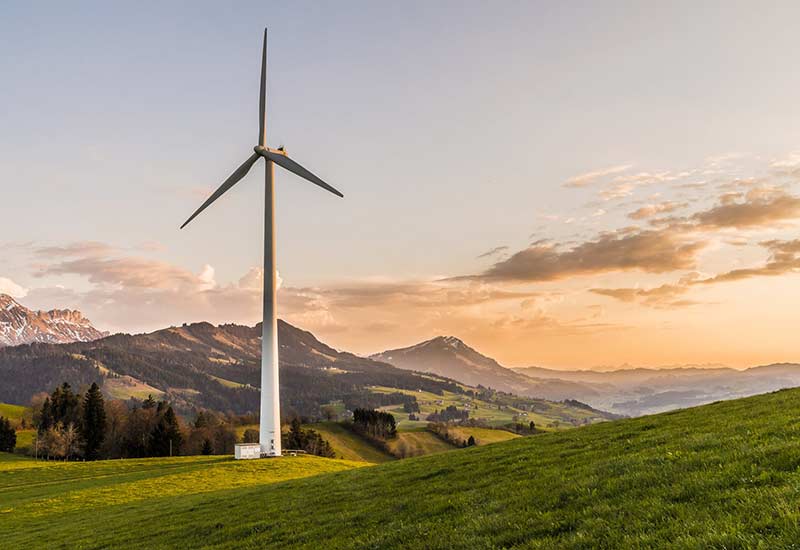
In 2020 their Share of gross electricity consumption in Germany already at 45.4 percent - And the trend is rising sharply.₂ But why is that? What are the benefits of infinite energy sources for consumers, the environment, and people around the world? And are there possibly also disadvantages?
Advantages
First of all, the motivating reasons for the use of electricity from renewable sources are discussed here:
- Climate change: The CO2 emissions for energy use are massively reduced and thus the global warming counteracted.
- Availability: Sun and wind are infinitely available and usable, natural resources.
- Independence: By using renewable energy sources, countries are less dependent on fossil fuels and energy imports.
- Environmental protection: No more radioactive waste from nuclear power plants would have to be stored, and no more landscapes and forests would have to be sacrificed to coal mining. Also the species extinction is thus counteracted.
- Safety: By turning away from fossil fuels and nuclear power, the potential danger to people and the environment is decreasing.
- Jobs: In the field of renewable energies, countless new and, above all, sustainable jobs are being created.
- Paris Climate Agreement: Only with the help of a serious, active expansion of renewable energies for electricity, heat and transport can Germany achieve the climate targets that have been set.
- Regionality: By allowing electricity to be generated locally, transportation and infrastructure costs can be saved and the regional economy can be supported.
- Comparable consumption costs: With the growing demand and the resulting increase in supply is Green electricity now available to consumers at absolutely comparable and often even better rates.
- Funding: As a consumer, you can benefit from government subsidies by investing in future-oriented, environmentally friendly photovoltaic systems or geothermal heat pumps.
Disadvantages
Even though the advantages outweigh the disadvantages, there are a few aspects that could be considered a disadvantage in a way:
- Investment costs: Both consumers and public authorities incur costs for the construction of plants, grids and the entire infrastructure. However, this investment usually pays off in the medium and long term, since one benefits from basically free and infinitely available energy sources.
- Short-term availability fluctuations: At night the sun does not shine at all and in winter only rarely - so the output of solar energy is very low at these times. Therefore, larger storage units in households may be necessary in order to be able to use the energy from renewable sources even in moments/seasons of poor availability. However, useful storage solutions already exist for this purpose.
- Fluctuations in performance: Due to the fact that, for example, the power produced from solar and wind energy fluctuates and is not absolutely guaranteed, grid operators (largely renewable-based grids) must constantly respond to the fluctuations. The proper distribution and storage of energy is therefore a focus. Fortunately, biomass, hydropower and geothermal energy are by nature low fluctuating energy sources.
Can you think of any other pros and cons? Then write me, as always, happy to comment with a short reason!
What forms of renewable energy are there?
When the Energy industry with nuclear energy, oil, natural gas or lignite and hard coal not sustainable what alternative forms of energy are then available to us? I have already mentioned them to you in the course of this article. Here I would like to explain them to you in more detail.
Solar energy
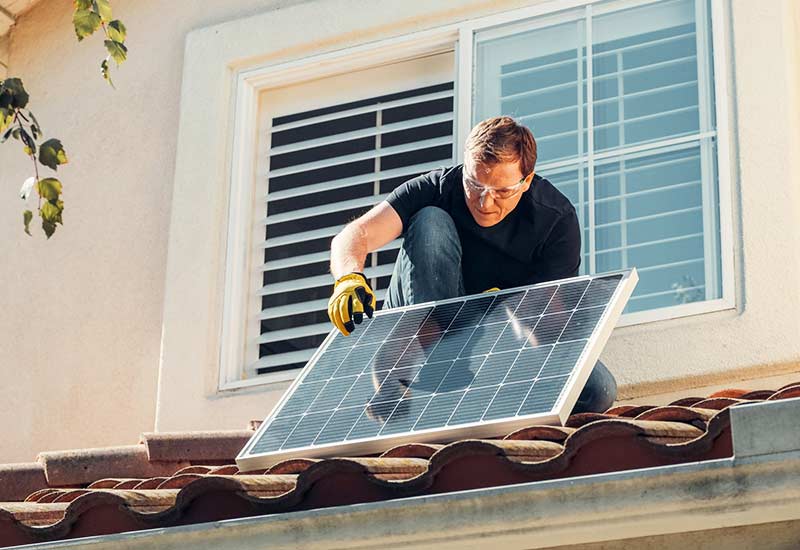
With the help of solar power, it is possible to use the unlimited energy of the sun to generate electricity and heat at low cost. The solar cells convert the sunlight through the "photovoltaic effect" directly into electricity. Solar collectors convert the sun's radiation into heat and are thus able to generate hot water or heat for buildings.₃
In your own home, you can enjoy the benefits of solar energy both through the Switch to a green electricity tariff, as well as by the Installation of a solar or photovioltaic system benefit. When buying a solar system you should definitely note some things. How much energy is generated is highly dependent on the weather - but otherwise unused roof space is ideal for generating green power on your own property.
Wind energy
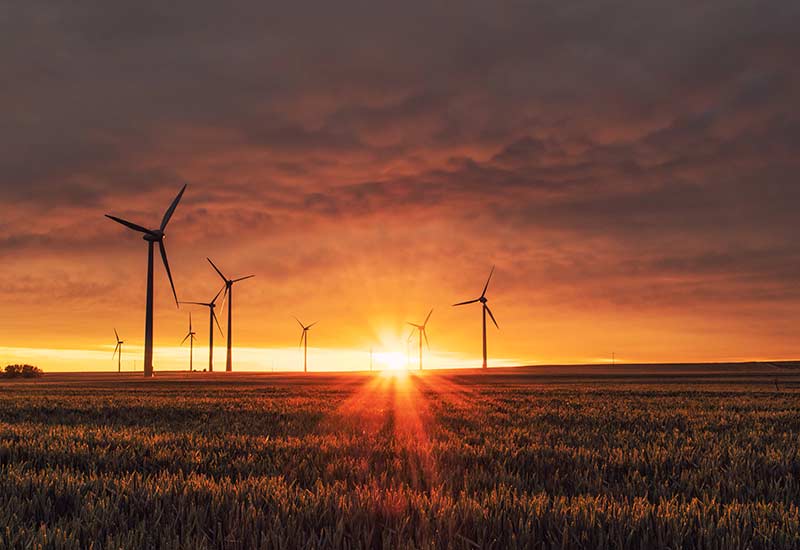
Solar radiation also creates another regenerative source that is used to generate electricity: wind. The large rotors of the wind turbines use the Movement of air masses in the atmosphereto convert this wind energy into electricity with the help of a generator. In order to produce as much energy as possible, there are often directly Several wind turbines in particularly windy regions. So-called wind farms exist both On-Shore (on land) as well as Off-Shore. (off the coast in the water)
You yourself can also use the green electricity generated in this way with a corresponding electricity tariff at your home. Use at home - or to use it with the help of a Small wind turbine on the roof, balcony or garden, even produce on site.
Notice: Wind turbines are criticized, among other things, because birds can be hit by the rotors. The well-considered selection of locations far away from nesting sites and nature reserves is therefore an environmentally and animal-friendly measure. Apart from that, only a fraction of the birds that die on glass panes of buildings, in traffic or not least for human meals die at wind turbines.₄
Hydropower
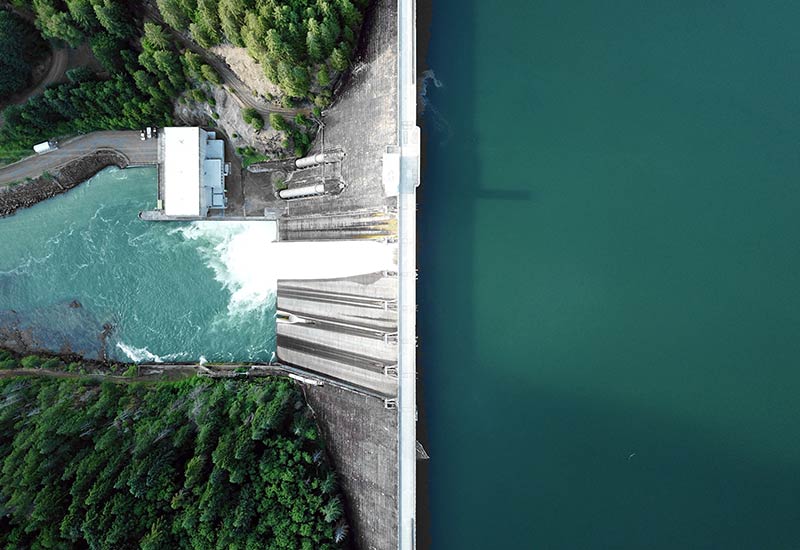
Running water has an incredible power. In the past, this power was used in classical mills to grind grain. Today, in a modern hydroelectric power plant, it drives a turbine that produces electricity with the help of the water movement and a generator. This works both with dammed waters (e.g. reservoirs) by means of integrated downpipes, at Running waters and with the help of Ocean currents. Hydropower is definitely one of the most consistent renewable energies, as it generates energy at any time of the year - and also day and night.
If a river runs through or by your property, it theoretically lends itself to the potential of a private hydropower plant to exploit. However, this definitely requires at least a water law permit. Otherwise, you also benefit again by switching to a Green electricity provider, which relies on hydropower, from this renewable energy source.
Tip: Do you have a website? CareElite's servers, for example, run on energy generated from hydropower. So switching to a green hoster can also make sense.
Biomass
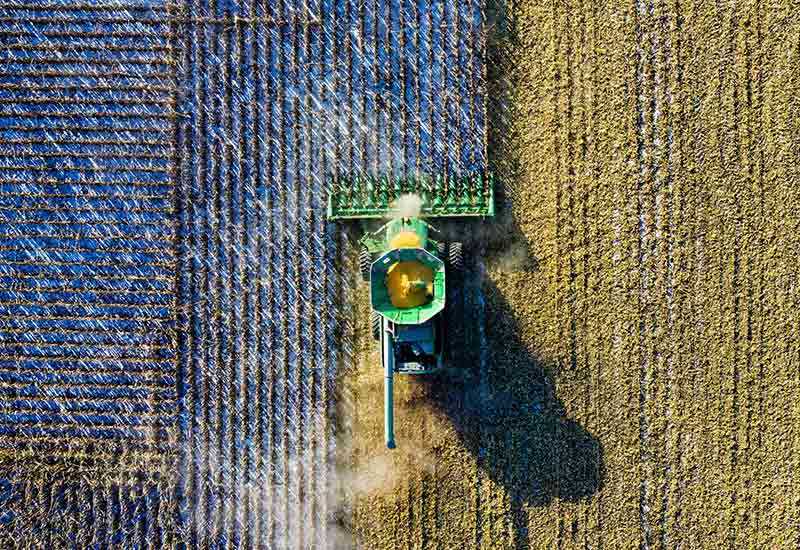
Biomass is another inexhaustible natural resource. This means that in the energy industry the Energy production from plants or plant residues which have grown through photosynthesis, i.e. with the help of solar energy. Around 7.8 percent of gross electricity generation in Germany is attributable to this form of energy.₅
Suitable for this purpose, for example, fast-growing Woody plants, specially grown for this purpose Field crops such as corn or rapeseed, as well as vegetable Waste from households and industry. A fermentation process takes place in closed tanks with the help of bacteria, producing usable gases such as methane. The fermentation residues are used as fertilizer, while the burned biogas and the waste heat are used to generate electricity and heat.₆
At home, you can use this renewable energy, for example, with a Pallet heating use. For this purpose, the renewable raw material wood is used as efficiently as possible by processing sawdust into wood pellets. Of course, you can also benefit from this regenerative energy source again by using a corresponding Electricity tariff benefit.
Geothermal energy
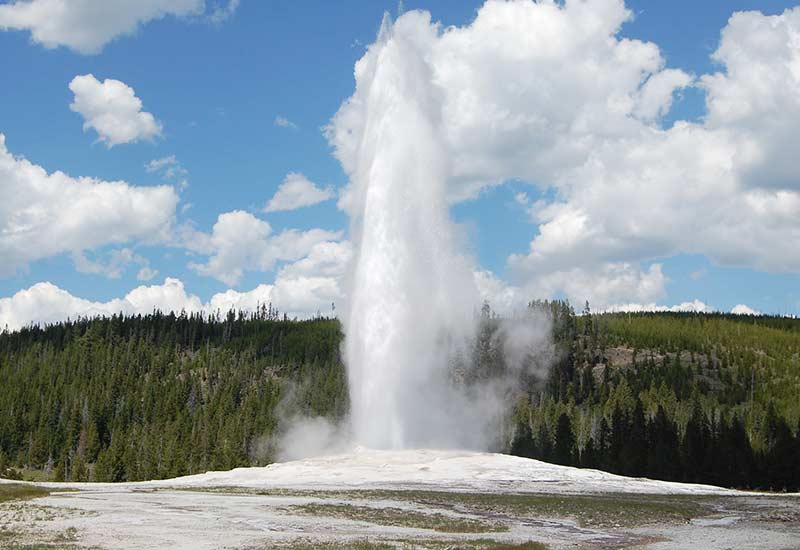
The earth's interior holds another usable, regenerative energy source: geothermal energy (energy stored in the earth's crust). Thermal energy) or, near the surface, also called geothermal energy. Hot water and steam drive a turbine. The energy can ultimately be used to generate electricity with the help of a generator.
With the help of a Geothermal heat pump you can also use this green energy on your own property. The device itself is somewhat inconspicuous and looks more like a refrigerator. In order to make the energy of the ground available, between 50 and 300 meters deep geothermal boreholes (mostly in the garden area) are necessary. Geothermal energy is definitely one of the most sustainable energy sources, which also makes you independent of gas prices, for example.
Frequently asked questions about renewable energies
To conclude this article, I would like to briefly answer the most frequently asked questions about renewable energies.
What are renewable energies?
Renewable energies are forms of energy that draw on infinite or rapidly renewable natural resources. These include, for example, solar, hydro and wind power.
What renewable energies are there?
The inexhaustible and rapidly renewable energy sources include wind, sun, water, biomass and geothermal energy.
What is meant by the energy transition?
The energy transition is the transition from society's inefficient use of fossil and nuclear energy sources to the efficient use of renewable energy sources. In short, the term is used to describe the transformation of energy from Nuclear and coal power to solar, wind and hydropower.
What are the types of biomass?
In principle, all gaseous, liquid or solid substances, residues and waste of biogenic origin are considered biomass. For example, arable crops, algae, and organic waste from food, animal husbandry, and landscape management. Wood pellets, corn, rapeseed, straw or biogas are forms of biomass.
Can Germany only be supplied with renewable energies?
According to the Fraunhofer Institute for Solar Energy Systems, it is possible to supply one hundred percent of Germany's energy from renewable energy sources. This means that Germany's energy needs can be met with the help of energy sources available locally - without any energy imports from abroad.
How large is the share of renewable energies in the German electricity mix?
In 2020, the share of renewable energies in gross electricity consumption in Germany was already 45.4 percent: with a strong upward trend. According to the Working Group on Renewable Energies Statistics (AGEE-Stat), the shares of sustainable electricity generation in the first half of the year went to onshore wind power at around 42.9 percent, offshore wind at around 10 percent, photovoltaics at around 20.1 percent, biomass at around 18.5 percent and hydropower at around 8.1 percent.
Why are "renewable energies" called renewable energies?
Renewable energies such as water, solar and wind power owe their name to the fact that they are practically inexhaustibly available to living beings on earth or regenerate quickly. They are therefore renewable, compared to limited fossil or nuclear energy sources.
Which renewable energy source is the most important in Germany?
The most important energy source for electricity generation in Germany is wind power. In the first half of 2020, wind power accounted for around 53 percent of renewable energies in Germany, according to the Working Group on Renewable Energies Statistics (AGEE-Stat).
Renewable energies for a sustainable energy transition
By switching to electricity from sustainable, inexhaustible sources, we ultimately protect not only our environment, but also ourselves. There is a wide range of alternative energy available to us. Switching to a green electricity provider really only takes a few minutes - and the installation of a photovoltaic system also pays for itself relatively quickly. Why should we still stick to fossil fuels?
Relying on sustainable, natural energy sources and conserving the earth's resources also means, Respect towards the planet, towards animals and above all towards other people and not least towards your own children and grandchildren. Finally, I would like to give you a few more articles that might be useful to you in this regard:
- Sustainability in electrical appliances - this is what counts
- How to make your commute sustainable
- Tips for saving water at home
I hope that I could help you with this article and give you all the important information about renewable energies. Do you have any questions, tips or suggestions? Then I look forward to your comment!
Stay sustainable,

PS.: Using renewable energy is good - but it is even better if you use as little of it as possible. At Save electricity and Conserve resources you get more valuable tips about it! Have fun!
References:
₁ E. Günther: Renewable energies, available at https://wirtschaftslexikon.gabler.de/definition/erneuerbare-energien-53729 [21.12.2021].
₂ A. Breitkopf: Share of Renewable Energies in Gross Electricity Consumption in Germany in the Years 1990 to 2020 (as of March 2021), available at https://de.statista.com/statistik/daten/studie/2142/umfrage/erneuerbare-energien-anteil-am-stromverbrauch. [21.12.2021].
₃ German Federal Ministry for Economic Affairs and Climate Protection: Solar Energy, available at https://www.erneuerbare-energien.de/EE/Navigation/DE/Technologien/Solarenergie-Photovoltaik/solarenergie-photovoltaik.html. [21.12.2021].
₄ Bund für Umwelt und Naturschutz (BUND) e.V. Regionalverband Südlicher Oberrhein: Windenergie, Windräder, Windkraft, Vögel, Fledermäuse & Vogelschlag (Status: 04.08.2021), available at http://www.bund-rvso.de/windenergie-windraeder-voegel-fledermaeuse.html. [21.12.2021].
₅ A. Breitkopf: Biomass share of gross electricity generation in Germany from 1991 to 2020 (as of December 2020), available at https://de.statista.com/statistik/daten/studie/251214/umfrage/anteil-der-biomasse-an-der-stromerzeugung-in-deutschland. [21.12.2021].
₆ A. Franck: Renewable energies - Energy from biomass (as of 02.03.2021), available at https://www.planet-wissen.de/technik/energie/erneuerbare_energien/energie-aus-biomasse-100.html. [21.12.2021].

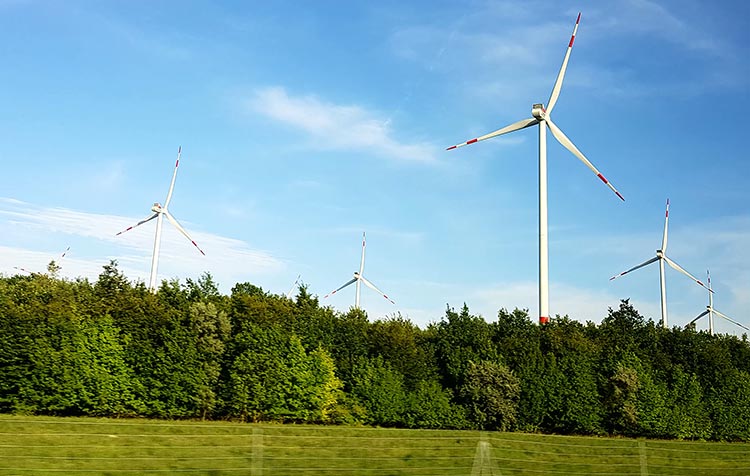




Great blog article, super informative and enlightening! Thanks for this
Comments are closed.